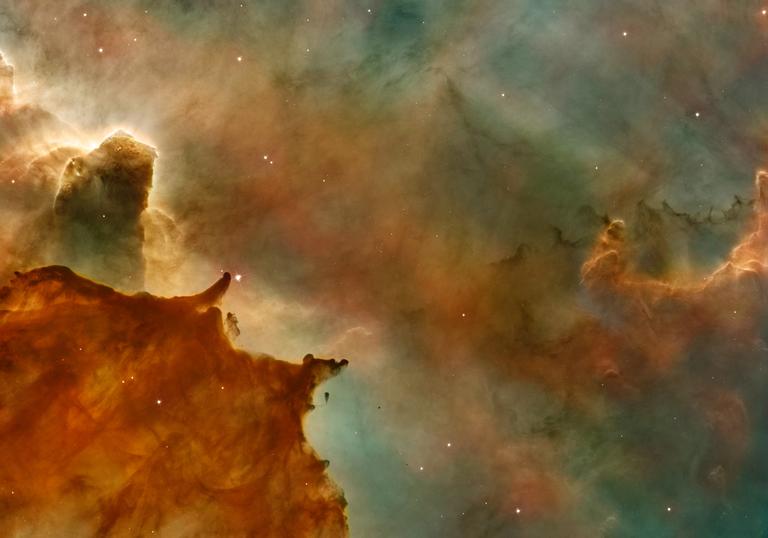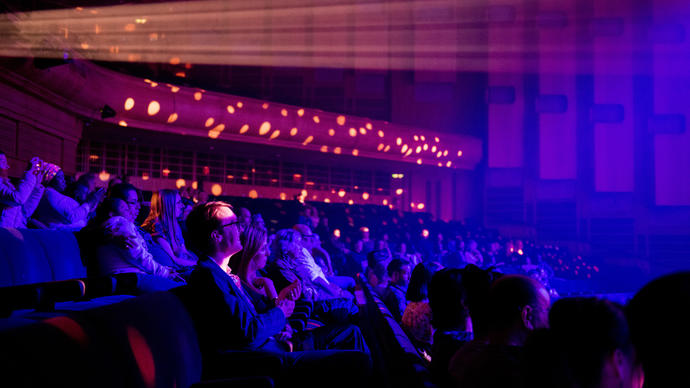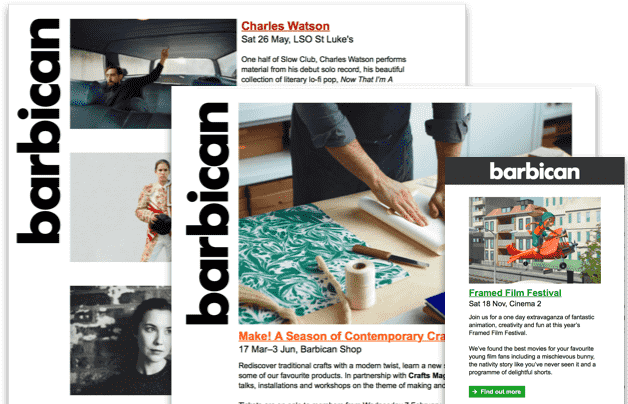
Programme and performers
Programme
Joseph Haydn The Creation
Performers
Academy of Ancient Music
Laurence Cummings conductor
Nina Dunn video and projection designer
Mary Bevan Gabriel
Stuart Jackson Uriel
Matthew Brook Raphael
Rachel Redmond Eve
Ashley Riches Adam
Matt Brown video designer for Nina Dunn Studio
Laura Salmi visual dramaturgy for video
Adam Lansberry NOTCH artist
Luigi Sardi video programmer
Harrison Cooke production video engineer
Matt Somerville video engineer
Universal Pixels video equipment supplier
Artist biographies
The Academy of Ancient Music is an orchestra with a worldwide reputation for excellence in baroque and classical music. Using historically-informed techniques, period-specific instruments and original sources, we bring music vividly to life in committed, vibrant performances.
Established nearly 50 years ago to make the first British recordings of orchestral works using original instruments, AAM has released more than 300 albums to date, collecting countless accolades including Classic BRIT, Gramophone and Edison awards. We now record on our own-label AAM Records, and are proud to be the most listened-to period-instrument orchestra online, with over one million monthly listeners on Spotify.
Beyond the concert hall, AAM is committed to nurturing the audiences, artists and arts managers of the future through our innovative education initiative AAMplify. Working in collaboration with tertiary institutions across the UK, we engage the next generation of period-instrumentalists with side-by-side sessions, masterclasses and other opportunities designed to bridge the gap from the conservatoire to the profession, safeguarding the future of historical performance.
AAM is Associate Ensemble at the Barbican Centre, London and the Teatro San Cassiano, Venice; Orchestra-in-Residence at the University of Cambridge, Milton Abbey International Summer Music Festival and The Apex, Bury St Edmunds; and Research Partner to the University of Oxford. The 2021–22 season sees Laurence Cummings join the orchestra as Music Director.
Matthew Brook has appeared as a soloist throughout Europe, Australia, North and South America and the Far East. He studied at the Royal College of Music, and has worked with many of the world’s greatest conductors including Sir John Eliot Gardiner, Richard Hickox, Sir Charles Mackerras, Harry Christophers, Christophe Rousset and Sir Mark Elder, and orchestras and ensembles including the Philharmonia, the London Symphony Orchestra, the Royal Philharmonic Orchestra, St Petersburg Philharmonic, the Freiburger Barockorchester, the BBC National Orchestra of Wales, the Orchestra of the Age of Enlightenment, the Chamber Orchestra of Europe, the Scottish Chamber Orchestra, the English Baroque Soloists, the City of London Sinfonia, Collegium Vocale Gent, the Gabrieli Consort, Les Talens Lyriques, The Sixteen, and Orchestra Nationale de Lille.
This season, Matthew sings his recital programme with Iain Burnside titled View from the Villa at the Lammermuir Festival, Handel’s Messiah with Music of the Baroque in Chicago, and also on tour in Europe with the Academy of Ancient Music, the role of Pilate in Bach’s St John Passion with Les Violons du Roy in Quebec, and the role of Lodovico in Otello for Grange Park Opera.

Our Patrons and supporters
Find out about our Patrons, who help us keep our programme accessible to everyone and allow us to continue investing in the artists and communities we work with.
Love the arts? Become a Patron to engage more closely with our programme.
